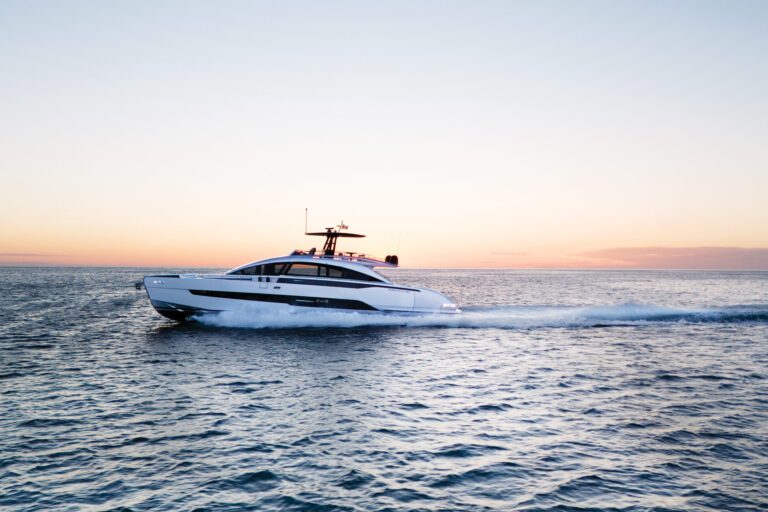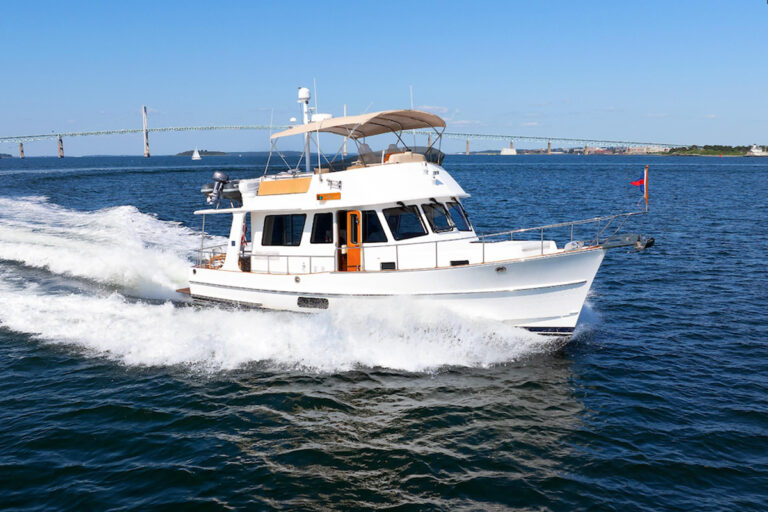Seeing all corners of the world during a six-year circumnavigation
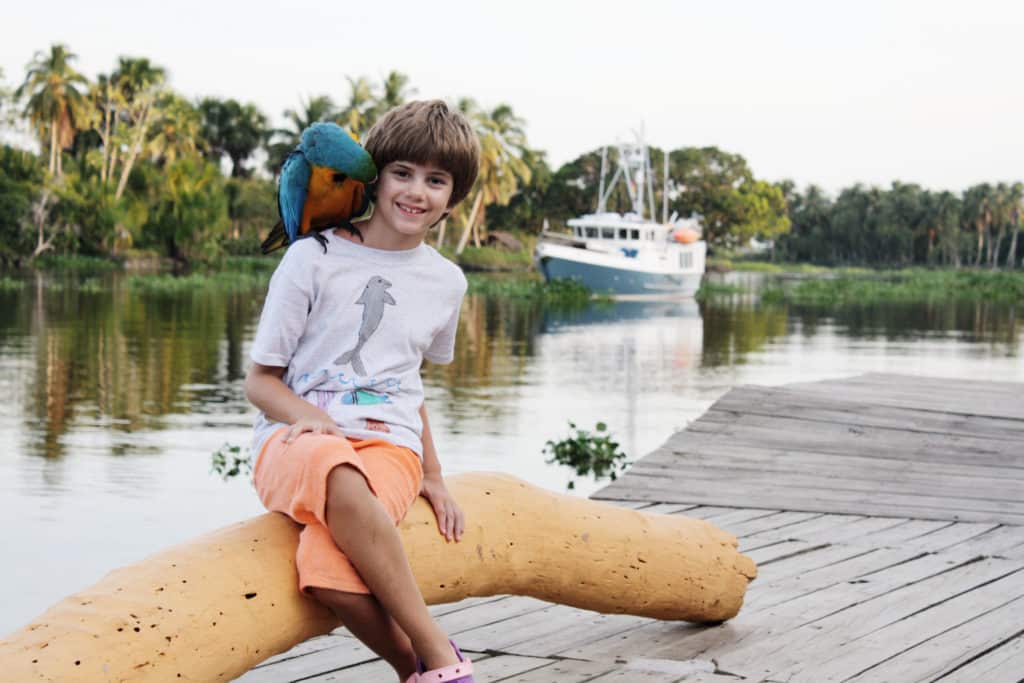
Who: Tom, Kim and Emily Lawler From: Ludlow, Massachusetts Trawler: Nordhavn 46
When we left home for our new life on the oceans aboard Emily Grace, our 8-year-old daughter, also Emily, was too scared to put her head underwater. That changed pretty quickly. Emily would soon be swimming with dolphins in the Caribbean, sea lions in Galápagos and sharks in Samoa.
What really stuck with us, though, was our time among the most remote islands in the South Pacific. The three of us decided to dink ashore to an atoll called Awai (near Vanuatu but not recognized by Google). When we stepped foot onto the island, a local man greeted us and then led us around to his village on the other (windward) side of the island, away from our anchorage near two other yachts. In the village were several structures for cooking, and drinking kava, and even a small church with ancestors buried just outside. Only one extended family lived on the entire atoll.
The local man showed me a transponder buoy he’d found. It had broken free from a longline fishing rig and contained a battery, solar panel, LED lights, transponder and GPS. I asked another traveling cruiser in the anchorage if he could help us rewire some of the parts to give this man his first solar light.
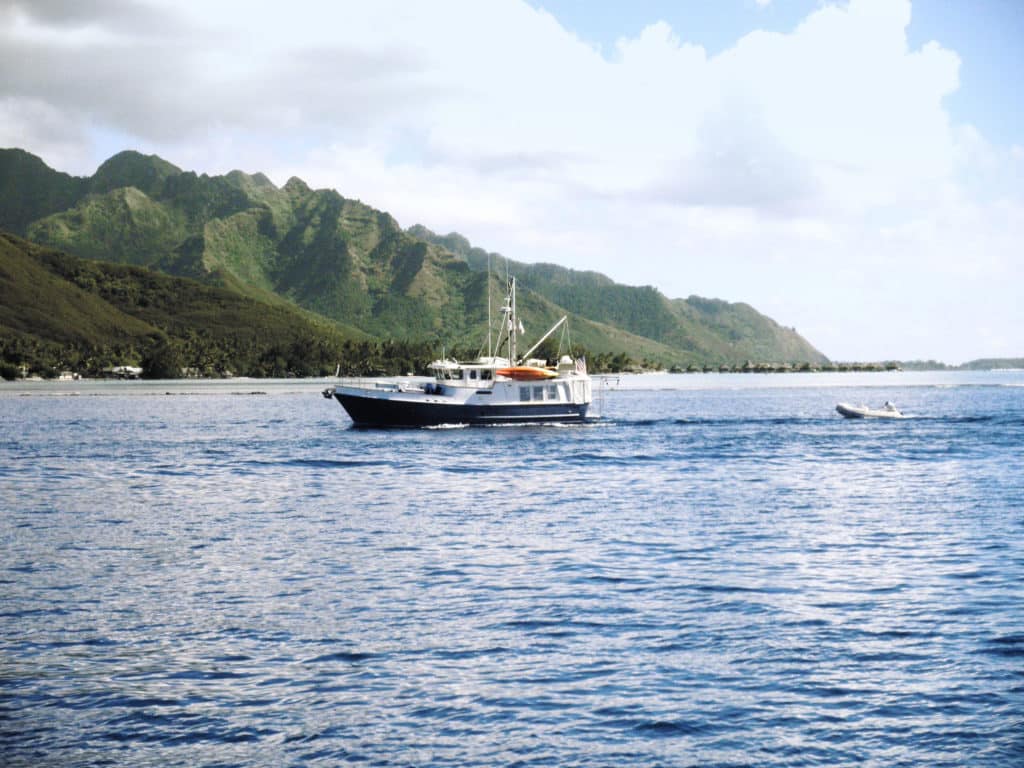
When we disassembled the buoy, we found that the battery was still working. I donated some tinned wire and a toggle switch to the project, which we completed the next day. We mounted the LED inside half a coconut shell along with my on-off toggle switch. This all hung from the thatched roof and was wired to the solar panel and battery still inside the waterproof buoy. As you can guess, there was a lot of sunshine to charge the battery during the day. That evening the man and his family had their first night light. It had to be one of the most satisfying moments of our six-year journey.
Lesson Learned: Never let stories from other people scare you away from an adventure. Be encouraged by the lure of new experiences and prospects of meeting wonderful people.
You’d Never Know: Emily was too afraid to put her head underwater when we left. By the time we arrived in the Caribbean on the way home, she was free-diving to 45 feet to collect shells. – R.S.
An unexpected Transatlantic Voyage to the Azores and beyond

Who: Julie Nariman and Richard Bost From: New York City Trawler: Kadey-Krogen 42
It wasn’t what we planned at all; I was never supposed to cross the Atlantic with Richard. This was Richard’s dream. The original idea was that Richard would take the boat with friends all the way to Newfoundland and then to Iceland. I would meet him there and then we’d go to Norway.
Then things started to change shortly before Richard was supposed to leave. Everyone who was going started dropping like flies. “I can’t do this. I’m so busy. I can’t go. I got a new job.”
About a month before departure I told Richard that if no one else would go with him, I’d do it. And that totally transformed the trip. Because of icebergs in the North Atlantic we altered our course. Instead of going to Newfoundland, we’d cross straight to the Azores. Honestly, the weather wasn’t so great through the Atlantic. We didn’t see a lot — a couple of whales every few days. But it was so peaceful. That’s what I’ll always remember. It was hard to picture we were on an ocean. We’d look around and it felt like we were on a giant lake.

That’s when we realized, with boats, most of the stressful things happen close to shore. Our joke was that once we actually arrived in the Azores the hardest part of the entire trip was docking in this tiny marina. Getting across the Atlantic? It was relatively easy.
Lesson Learned: Richard was always collecting spare parts, and it made him really well prepared to repair anything on our journey. You can never have too many spare parts.
You’d Never Know: The [Kadey-Krogen][] is our first boat and we’ve only owned her for two years. We even did a four-day trawler school in Fort Lauderdale to make sure I’d like the lifestyle. Obviously, I did, so we decided now was the time to follow Richard’s dream. – J.L.
Beating Tropical Storm Ana Along the Carolina Coast
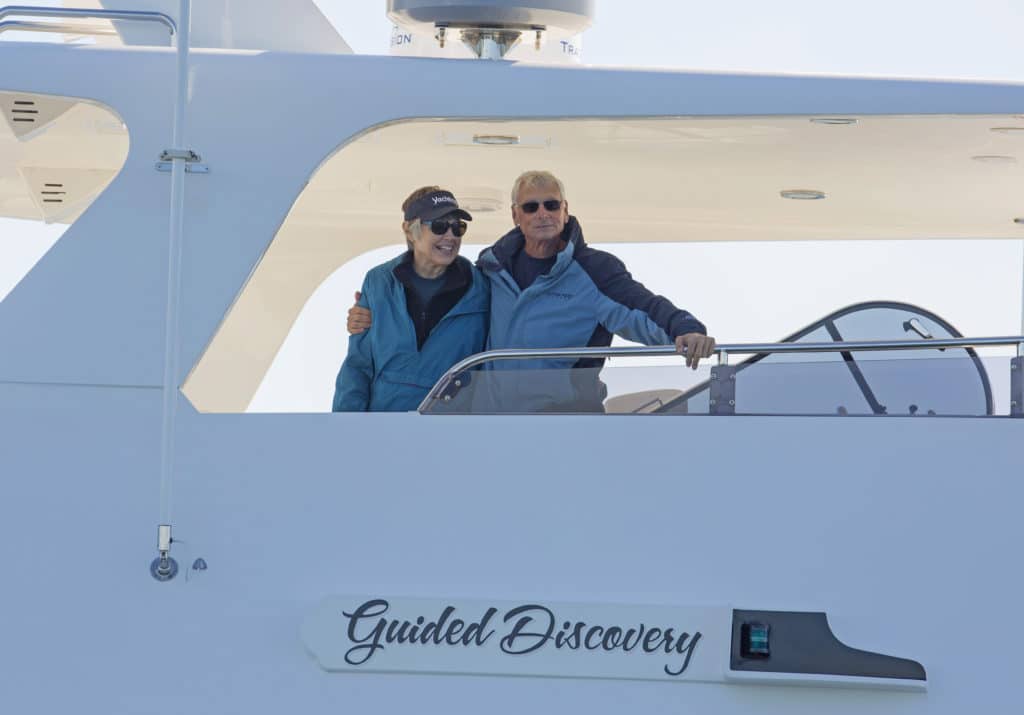
Who: Diana and Les Shapiro From: Sarasota, Florida Trawler: Outer Reef 630
The big question facing us on the morning Tropical Storm Ana approached was whether to run the Intracoastal Waterway from Morehead City, North Carolina, to Norfolk, Virginia, wait out the storm, or head out into the Atlantic and try to outrun it. We trusted our Outer Reef, Guided Discovery, and chose the Atlantic. Some perspective: On another trip, we’d encountered a frontal passage at Cape Hatteras, and within 20 minutes the winds were gusting up to 54 knots. All of a sudden there were 7- to 9-foot waves and it was 10 o’clock at night.
In this case, Ana’s winds were gusting above 60 knots nearly 100 miles to our south. Even with a fairly good forecast we knew we’d have about 12 hours of heavy seas. And then once we rounded Cape Hatteras it was forecast to diminish. That’s exactly what happened. We encountered 10- to 12-foot waves on a southeasterly heading going around
Diamond Shoal. Fortunately the wave period was between seven and nine seconds — we sat there counting the seconds. We took a lot of spray, but Guided Discovery never buried her nose.
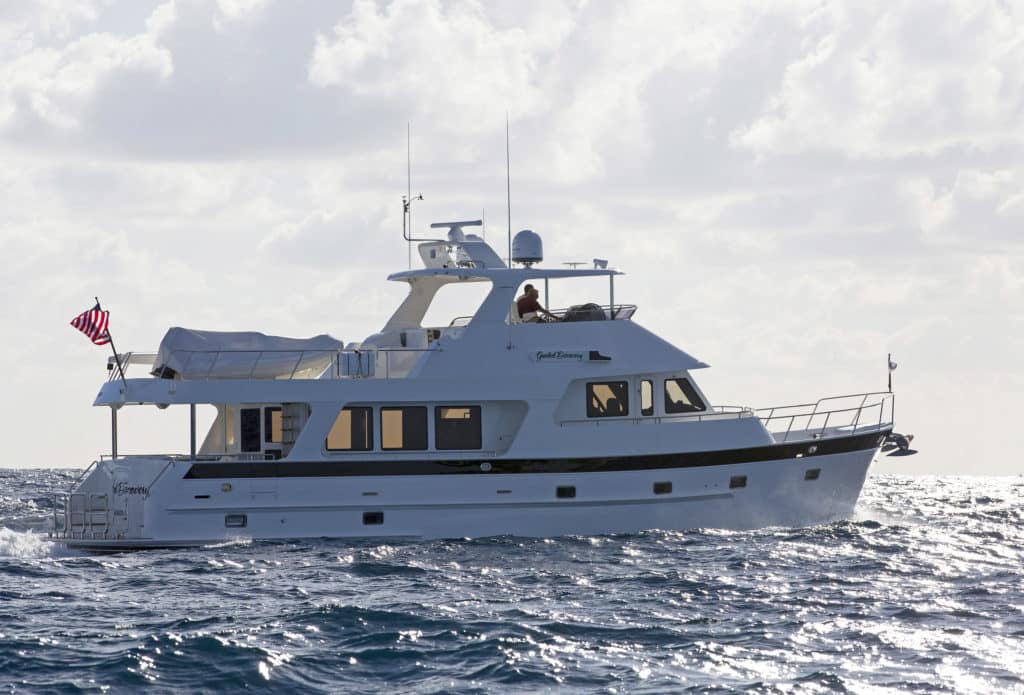
Three hours after rounding Cape Hatteras we were in 3- to 4-footers. The sun was setting. It was lovely. Not many people get to test the outer limits of a boat safely. I’ve now seen this one handle 10 to 12 feet on at least two points of sail. Outer Reef says they can do 18 feet, but I don’t think I ever want to go and find that out.
Lesson Learned: Be conservative in rough conditions, even if you think the boat can handle it. Should something go wrong, you’re all by yourself, possibly miles from help.
You’d Never Know: In September 2014 we sold our Chicago property to live full time at sea, with two permanent slips in Florida and Massachusetts. – J.L.

